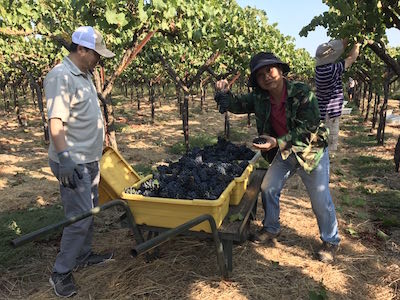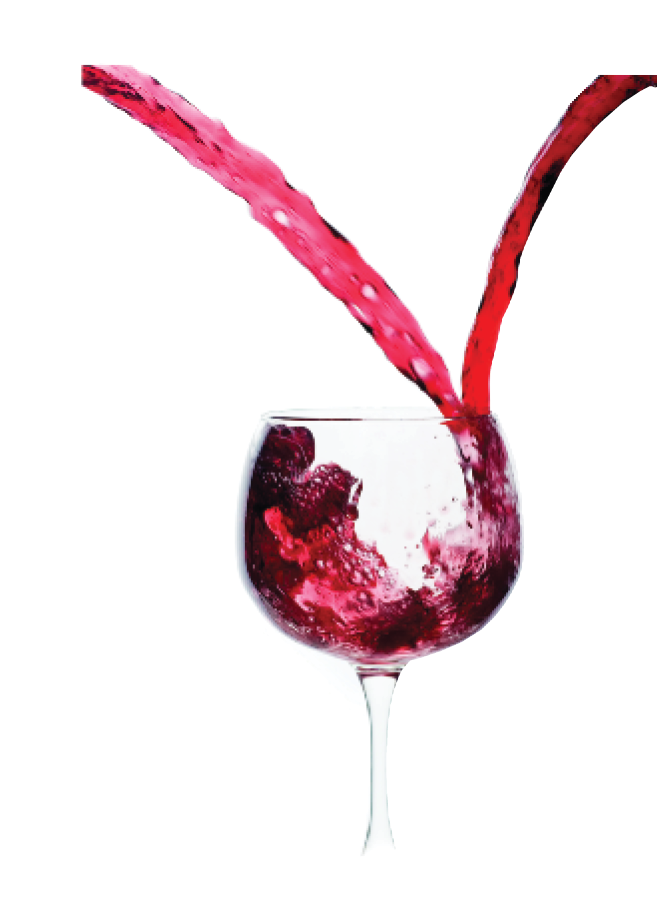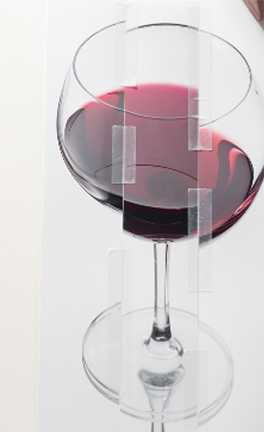As an avid home winemaker there is a slight confession I want to make. In the course of blending wine, I cheat in order to create a better tasting product. To define the terminology of “cheat,” this does not mean adding Opus 1 Reserve to my blue collar creation to improve the taste. In a similar vein I am not putting other people’s vino in my barrel to take credit for their work. Not my style. But what I am doing is adding a steroid-like substance when racking wine under my care. So what is this mysterious stuff that is being used to make a vin ordinaire taste so good and even score a few ribbons in blind tastings. It’s called Petit Verdot.
This grape that is best known for being used to blend with complex Bordeaux is thought to have originated in ancient Rome and somehow migrated with the emperor’s army to France. Petit Verdot has intense character, which builds tannin, structure, color, and finish to wines. French Bordeaux blends rarely have more than 3 or 4 percent in any bottle of wine. It is such a small amount that Petit Verdot’s reputation seems like it is getting tarnished by grapes that comprise a higher percentage of what comprises a French premium wine.
Where I pick near Lodi, California in late October or early November, Petit Verdot normally has a Brix of between 25.5 to 26.5. If rain falls at or around harvest, this grape does not care. Unlike some other varietals it is virtually mold resistant. If the grape has a high sugar level, adding some acid in the container while fermenting will often balance the pH between 3.55 and 3.7. Minor adjustments can be made later or not at all when the Petit Verdot is blended with lower-acid varietals.
As it turns out, Petit Verdot grapes and juice can be found all around the country. In addition to prominent wine-producing areas in New York, Washington, and California, it is available in Texas, Oklahoma, and in almost all coastal regions where grapes are grown. It just happens to be a variety that rarely receives top billing. But Petit Verdot has the reputation for making a $5 bottle of wine into a coveted $20 creation.
Once this straggler grape is pressed, a major decision remains — what is to be done with the juice?
First, you could use it exclusively for racking other red wines including Zin, Cab, Syrah, Merlot, etc . . . to spread the wealth. Often there is little choice but to take this course of action if limited volume is available. The second option is to make up sizable blends with other varietals. One of my favorites is to mix it with Petite Sirah, but the most popular is Cabernet Sauvignon. This grape also works well with Merlot to assist in creating more complexity and finish. The third option is to make a straight 100% Petit Verdot. While it takes time to develop in the bottle, it will often last for a decade without losing taste and quality.
For my last year’s wine lineup, I racked it with a Rhône blend, which was a bit flabby and lacked definition. With the intensity Petit Verdot added, the Rhône wine (Petite Sirah, Grenache, Mourvèdre, Syrah, and Viognier) now has the balance desired to make me proud of the final product. It was also mixed in at a 33% clip with Petite Sirah from the same vineyard, to level out the alcohol and acid levels. In my mind it is better to make these adjustments without adding large amounts of chemicals to what is eventually bottled. Petit Verdot to the rescue!





